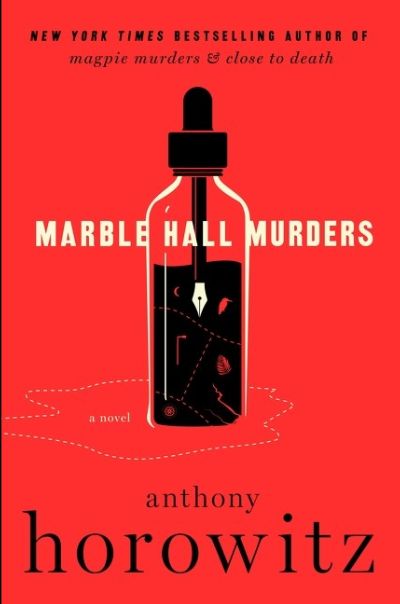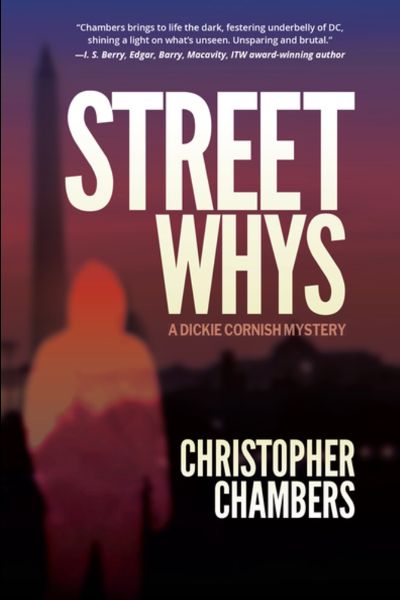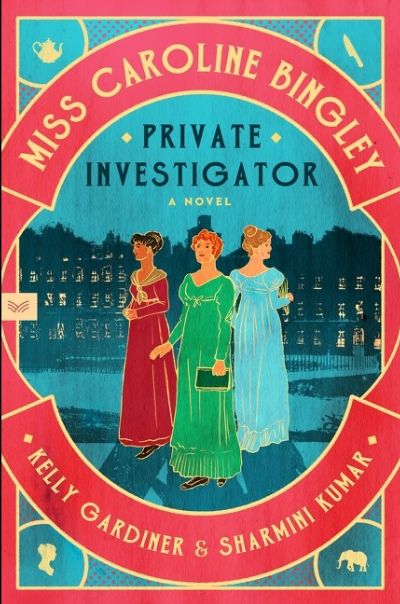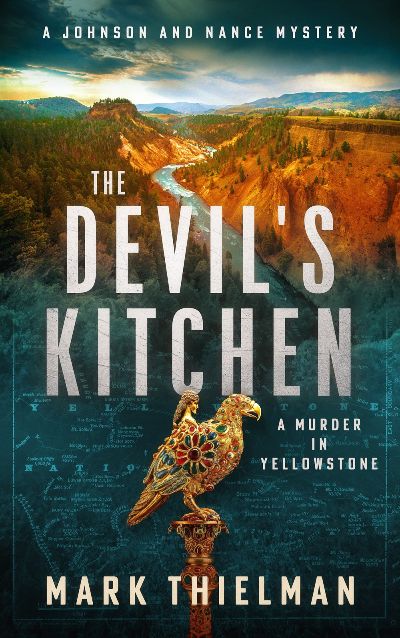Readers were introduced to Evander “Vandy” Myrick in the excellent first book in this series, Trouble in Queenstown. In that book, Vandy had just returned to her hometown (Queenstown, New Jersey) to establish herself as a private investigator, while still mourning the death of her college-age daughter. It’s a strong narrative that ricochets from Vandy’s tragic past to her gutsy present. In Death of an Ex, Vandy once again gets tangled up with family, specifically her ex-husband, Phil Bolden, who walks into her life—and into her bedroom—promising to bring their family back together. But after just one night together, Bolden is found murdered. And Vandy decides it’s her responsibility to investigate who killed him. But Bolden was complicated: a successful businessman, father, philanthropist, and more. And as the only Black woman investigator in town, Vandy has little privacy but is a victim of plenty of gossip. Once again, Pitts has written a novel rich in the many layers of community while delving deeply into the character of Vandy; the balance between the two is perfect. A great choice for a reading group.
Review
A pitch-perfect novel of suspense from Ryan that will force readers into racing to the book’s dramatic, and unsettling, conclusion. Tessa Calloway is a new but hugely successful novelist, and to capitalize on her popularity, her publisher has sent her on a multi-city, multi-week book tour that leaves Tessa exhausted, missing her young children and husband, while appreciating the hundreds of fans who come out to greet her. Until Tessa realizes that among her fans is a stalker. A stalker who knows her past inside and out, and has the power to sabotage her career while also destroying her family. Will Tessa capitulate and give her what she demands, if it means her darkest secrets will remain hidden? It’s a delight to have experienced, industry-insider Ryan provide this nail-biter with a good jolt of reality. And thanks to her for recognizing the roles that both booksellers and librarians play in fostering readers.
There’s a whole lot going on in this new Susan Ryeland novel, starting with Susan’s dumping of her Greek boyfriend, subsequent return to London, and taking on a freelance editing gig. But if only things were that simple. The book Susan finds herself editing is a new novel featuring Atticus Pünd, a fictional detective from decades ago and the star of the Alan Conway books. (Many readers will be familiar with the two preceding books and if they aren’t, they should be: Magpie Murders and Moonflower Murders, written by the now deceased Conway and edited by Susan.) In this novel, Susan is caught up in a metafictional mystery, in which the novel from decades ago, featuring Pünd, becomes all tangled up with the contemporary story, which is written by Eliot Crace—whom Susan actually knows!—and again edited by Susan. Horowitz’s (Close to Death, A Line to Kill) whole book-within-a-book thing is wonderfully smart, and the onslaught of twists and red herrings moves the stories along briskly. Susan’s voice dominates: it’s funny, sarcastic, anxious, and tough. It would be foolhardy to try to recount this book’s plotting. Just be assured that this book is brilliant, sure to be one of the best crime novels of 2025.
After Scavenger and Standalone, Chambers has brought his DC PI Dickie Cornish back to have his smarts tested and his heart trampled on again. Dickie’s clean after “a mishap in college” (Howard University, no less) saw him living as an addict on the streets and in various flophouses. He’s the kind of guy who lets his cat eat mayo and crumbs off his plate, but can put a tough facade on when he has to. When a way-out-of-his-league former classmate, now Deputy Attorney General of the United States, asks him—with the threat of a murder charge from his past if he says no—to find out who’s supplying lethal drugs to the area, he’s back on the streets, tough attitude in place. Readers are in for a layered mystery here, with Dickie moving between tent cities and the Department of Justice to figure out what’s going on, and with figures from his past reappearing and adding to the puzzle and mayhem. Throughout, the Black PI’s failure to fit in his old haunts and new ones creates an atmospheric tension that’s imparted by Dickie’s inner monologue and realistic dialogue with characters of all kinds. Noir fans, look out.
Frankie Elkin, finder of missing people, goes to Tucson, Arizona, to search for a missing Afghan refugee in Gardner’s (Still See You Everywhere), latest thriller. Sabera’s a young mom who vanishes, leaving behind a frightened little girl and a husband who doesn’t seem all that concerned his wife is missing. The police don’t even bother opening a case into the matter. Sabera’s friend, Aliah, knows something has happened and hopes Frankie can uncover the truth, even if the answer is painful. Establishing a home base of operations, Frankie finds a place to live temporarily: housesitting for a rich gamer with exotic pets and a quirky staff, who quickly become her allies. The more Frankie digs, the more everyone seems to be hiding something, and when a breaking news segment on local television shows what appears to be Sabera in the background of a murder scene, Frankie starts to question if anyone is trustworthy. The past collides with the present, and Frankie will face the unfortunate reality that finding answers might not necessarily mean winning or justice. Gardner knows how to do a psychological deep dive into her characters, making readers feel that these people with traumatic pasts and secrets could easily be our next-door neighbors. She also provides insight into the plight of refugees while amping up the tension and twists. Another great entry from the always reliable Gardner.
Murphy likes to take lawyer characters out of their geographic and emotional comfort zones, and in this, perhaps his best book yet, he makes the discomfort both sharper and more nebulous than we’re used to. The author’s (An Honest Living) main character is Jim, who’s married to Valentina; they spend the summer in a house he inherited in Buzzards Bay, on the southeastern coast of Massachusetts. Before he met Valentina, he gave his tight pack of college friends shares in the home; over the years, they’ve summered there, some regularly, others rarely seen. This summer sees the return of several regulars and of Bruce, who hasn’t shown up in years. He brings with him a darkness that creeps over the old friends and becomes especially pronounced when the residents, in a nod to the house’s origins as a home for an occult group, holds a séance. A French woman who’s an ex of one of the gang, with her languid but also guarded ways, will be memorable for her strange manner. But all the characters and even the house will stay with readers, especially those who enjoy introspective language (“there was something petty, almost squalid, in not appreciating a friend’s beauty until she was holding it there before you”) and a slight tinge of the supernatural.
Coile, who also writes as Andrew Pyper, passed away in early January, and this tense and terrific novel is sadly his last. A crew of three—two men and one woman—is sent to Mars to coordinate the eventual habitation of the red planet. Machines were sent earlier to create the base where they will live out the remainder of their lives, but the crew arrives at Mars to find no response to their signal. A bumpy ride to the surface and changed lock codes reveal a strange scenario. The robots built the habitat but were attacked by a being with stealth abilities and super strength, and the description sounds like an insect if it had one giant claw and could walk on two legs. As the crew listens to the machines tell their story, it appears that not all is as it seems, and the robots might be homesick for Earth, which would be entirely against their programming. This mix of horror, isolation, and psychological suspense demands to be read in one sitting and forces the reader to ask provocative questions with answers that have profound implications, such as, “What constitutes sentience?” and “What is the price humanity is willing to pay to reach the stars?” Exiles would make a fantastic movie, and fans of Alien or Mary Doria Russell’s The Sparrow should consider going on this journey.
A marvelous parody of reality TV shows—think especially of Love Island—mashed up with traditional mysteries, if traditional mysteries include lots of fake sex, along with fake hair and teeth. When one cast member disappears from the super-successful, super-sleazy show Sex Island, the producers need to bring on someone else as a replacement ASAP. Staten Island native Luella van Horn is quickly hired as a two-fer, to join the show as a new contestant and in the meantime solve the case of the missing cast member. Except Luella is really a divorced former social worker from Staten Island named Marie Jones, who aspires to be a private eye and whose past is pretty inept, if incredibly humorous. But as the story grows darker, Marie finds herself trying to get out of a situation that is becoming riskier by the hour. First released as a self-published novel, this book was quickly embraced by comedian Jo Firestone’s many fans. While I haven’t heard it, the audio version, narrated by Firestone herself, is hugely popular.
December 16, 2025 will mark the 250th anniversary of Jane Austen’s birth, and what better way to celebrate than with this delightful reimagining of Elizabeth Bennet’s antagonist from Pride and Prejudice. Two years after the events of that novel, in which the snobby and haughty Miss Caroline Bingley lost the battle for Mr. Darcy’s affections, she is “marooned” at her brother Charles’s estate in wintry Derbyshire, bored with weeks of country dances, unchanging society, and dull conversations. Despite her complicated relationship with the Darcys, Caroline has grown fond of Mr. Darcy’s younger sister, Georgiana. When Georgiana’s Indian maid, Jayani, disappears from Pemberley and Georgiana heads up to London alone in pursuit, Caroline, accompanied by her loyal manservant, Gordon, tracks both fugitives and stumbles upon a brutal murder that implicates Jayani. Drawing on her keen intelligence, her bold self-confidence, and her large income, our Miss Bingley plunges into a gritty underworld of poverty, cruelty, and exploitation far from London’s glittering Ton. As she seeks to clear Jayani’s name, she also discovers the brutal colonialism practiced by the East India Company. Australian authors Gardiner (1917) and Kumar (who produces Melbourne’s Austencon) transform Austen’s mean girl into a more sympathetic protagonist while preserving her quick wit, sharp tongue, and independent spirit. Janeites will eagerly await Miss Bingley’s next adventure in sleuthing.
A reader may justifiably expect this book to be set in the American west, but this work, a two-novel combination, begins with the French neoclassical painter Jacques-Louis David and and the French Revolution. The modern-day mystery is set in Yellowstone National Park, where seasonal ranger and retired Fort Worth cop Clarence Johnson discovers a corpse as an unplanned part of his tour of park history. It connects him with Park Service Police Investigator Allison Nance and DEA Agent LaFleur, and after some struggle to get his creds recognized, Johnson joins the investigation. LaFleur is convinced that this death is drug related and does everything to make the evidence fit his theory. Johnson is pretty sure it is not and works to persuade Nance to be open minded. Nance’s specialty is art history; the painter Thomas Moran is said to have much to do with Yellowstone being the first National Park, and art as evidence crops up often in this case. Chapters alternate between the past and the present, with an artifact of French royalty at the center of intrigue in both time frames. While it is somewhat unusual to have so much time spent in the past, it is necessary here to set the stage. The interpretation of the artistic clues is a bit stretched, but essential to the conclusion. This could be an interesting series, and I hope to see further adventures of Nance and Johnson, along with Tripod, his three-legged rescue dog.










